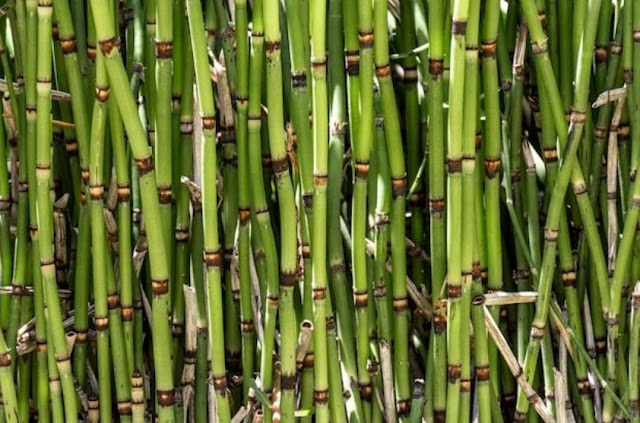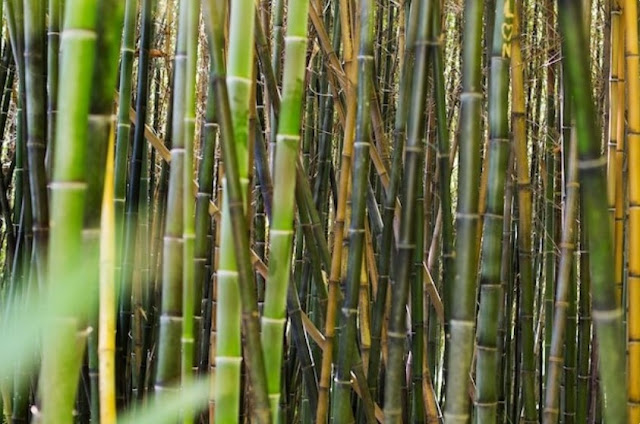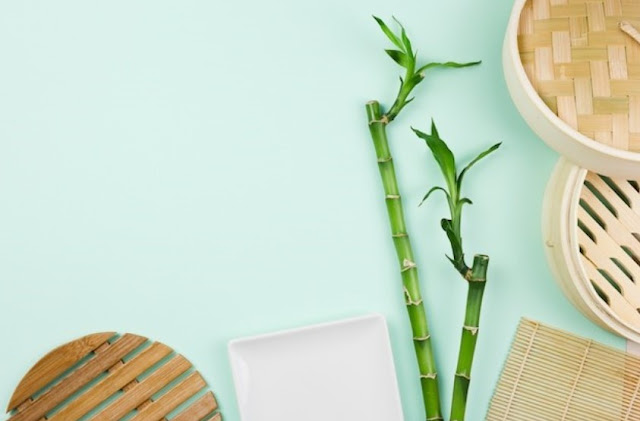Contents
- Water Bamboo Is
- Characteristics of Water Bamboo
- Types of Water Bamboo
- 1. Large Water Bamboo (Equisetum hyemale)
- 2. Small Water Bamboo (Equisetum fluviatile)
- 3. Tropical Water Bamboo (Equisetum giganteum)
- 4. California Water Bamboo (Equisetum californicum)
- 5. Japanese Water Bamboo (Equisetum japonicum)
- 6. African Water Bamboo (Equisetum ramosissimum)
- 7. North American Water Bamboo (Equisetum arvense)
- 8. South American Water Bamboo (Equisetum giganteum)
- How to Care for Water Bamboo
Water Bamboo Is
Water bamboo, also known as “Zizania latifolia” or “wild rice,” is a type of aquatic plant that belongs to the grass family, Poaceae. It is native to East Asia and is commonly found in wetlands, marshes, and shallow water bodies. Water bamboo is known for its tall, slender stalks that can reach heights of up to 16 feet (5 meters). The plant’s leaves are long and narrow, resembling those of bamboo, which is how it gets its name.
Water bamboo produces edible grains that are often used in Asian cuisine. These grains, which are similar in appearance to rice, are harvested and cooked as a staple food in some regions. They have a nutty flavor and a chewy texture, making them a unique addition to various dishes.
In addition to its culinary uses, water bamboo also plays a role in wetland ecosystems by providing habitat for wildlife and helping to stabilize the soil in wetland areas. It is considered an important plant for both ecological and culinary reasons in the regions where it grows.
For plant lovers, you are certainly familiar with the name water bamboo. Plus there is an assumption that this one plant can bring good luck.
Meanwhile, when compared to other types, this bamboo plant is indeed smaller. While there are also differences in characteristics and how to care for it.
Characteristics of Water Bamboo
Water bamboo, also known as semboyan bamboo (Equisetum hymale), is a plant that has specific characteristics that distinguish it from other plants. Here are some of them:
1. Stem Structure
This bamboo has a very unique and recognizable stem. The stem is made up of small segments that repeat each other and are often referred to as “segments”.
These segments give the culms of this plant a similar look to true bamboo culms, even though they are not actually closely related.
2. Height
This type of bamboo can reach impressive heights. Some species can grow up to several meters tall, with their upright culms.
3. Garden Plant
Water bamboo is a plant that is often planted in gardens and parks as an ornamental. It provides an interesting exotic feel and can be used to create a variety of interesting landscape shapes.
4. Aquatic Plants
Despite being called “bamboo”, this plant is not actually a true member of the bamboo family. It is a member of the Equisetaceae family and is more related to ferns.
They are found growing in aquatic habitats, such as swamps, and often absorb water through their stems.
5. Leaves and Branches
This plant has small leaves located along its stem. These leaves are usually very small and do not have a major role in photosynthesis, as most of this process occurs in the stem.
Also, this plant does not have true branches like trees.
6. Ecological Function
This type of bamboo has an ecological role in aquatic ecosystems. It can act as a natural filter for water and provide nesting sites for some types of aquatic insects.
7. Primitive Form
One of the interesting characteristics of this bamboo is its primitive shape. This bamboo is one of the most primitive groups of plants in existence and has been around for millions of years, making it an interesting plant species for research in the context of plant evolution.
8. Ornamentation and Crafts
In some cultures, water bamboo culms can be used for various crafts and decorations. The plant has a strong structure and is often used to make various kinds of decorations and jewelry.
Types of Water Bamboo
Here are the different types of water bamboo to know:
1. Large Water Bamboo (Equisetum hyemale)
The most common and easily recognizable type. The culms are tall, upright, and have well-defined internodes.
These plants are often used in landscapes as ornamental plants. They grow in a variety of aquatic habitats, including swamps, rivers, and ponds.
2. Small Water Bamboo (Equisetum fluviatile)
It has slimmer stems and is usually smaller than the previously mentioned. This type grows in flowing waters such as rivers and small streams.
3. Tropical Water Bamboo (Equisetum giganteum)
This type has a fairly large stem and is often found in tropical and subtropical areas. And has good adaptability to grow in humid and warm environments.
4. California Water Bamboo (Equisetum californicum)
This is a species found in the California region and surrounding areas. It grows in swamps and other watery areas.
5. Japanese Water Bamboo (Equisetum japonicum)
This species is found in Japan and parts of East Asia. These plants are often used in Japanese gardens and are known for their slender stems.
6. African Water Bamboo (Equisetum ramosissimum)
This species is commonly found in some parts of Africa. It often grows on river banks, and its stems can reach impressive heights.
7. North American Water Bamboo (Equisetum arvense)
This species is one of the most common water bamboos found in North America. It grows in a variety of habitats, including grasslands and other open areas.
8. South American Water Bamboo (Equisetum giganteum)
Found in South America, this species can grow to be quite large and is often used in ornamental plantings.
How to Care for Water Bamboo
Here is how to care for water bamboo that you need to know:
1. Placement
Make sure that this plant is placed in an area that gets moderate sunlight to partial shade. Too much direct sunlight can cause the foliage to dry out.
2. Proper Irrigation
This plant requires sufficient moisture to grow well. Make sure the soil is always moist, but avoid excessive waterlogging.
Use trickle or slow irrigation to keep the soil consistently moist.
3. Fertilization
This plant usually does not require intensive fertilization. Fertilizing once a month with a mild liquid fertilizer containing elements such as nitrogen and potassium can help its growth.
4. Retransmission
This plant can thrive through spores or re-broadcasting. If you want to grow more water bamboo, you can dig up and divide the rhizomes in spring.
5. Routine Maintenance
Pull weeds that grow around the water bamboo regularly, as weeds can compete with the plant and interfere with its growth. If the leaves appear dead or dry, trim them to improve the overall look of the plant.
6. Attention to Pests and Diseases
The plant is usually resistant to pests and diseases, but it is still necessary to check carefully for signs of infestation such as aphids or fungus.
7. Cut Back
This plant can grow quite tall, and if you want to keep its size in line with the garden area, you can cut back the taller stems.
That’s the definition and how to care for water bamboo. This plant is very unique and attractive with its distinctive stems, even though it is not a true member of the bamboo family.
It is suitable for use in landscapes as an ornamental plant and has an important ecological role in aquatic habitats.
Check out other designs directly from your cellphone via WhatsApp Channel: https://whatsapp.com/channel/0029VaASACYFXUuYULZWe939.





